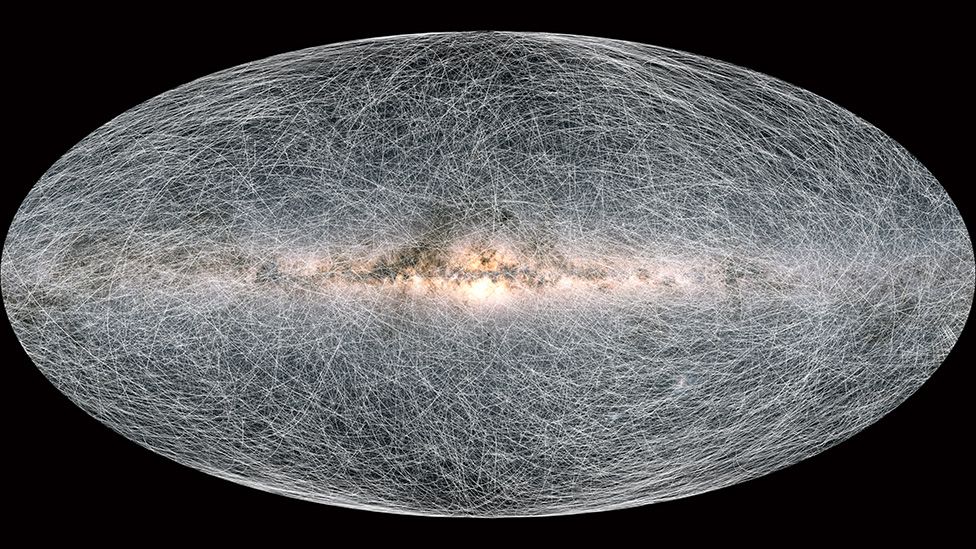Gaia 'discovery machine' updates star catalogue
 It's been described as the "ultimate book of the heavens" - a catalogue of stars in our Milky Way Galaxy assembled by Europe's Gaia Space
It's been described as the "ultimate book of the heavens" - a catalogue of stars in our Milky Way Galaxy assembled by Europe's Gaia Space
Telescope.
On Thursday, scientists gave an update on how its survey is progressing.
So far, Gaia has plotted the precise positions of more than 1.8 billion stars; and for most of these, it also knows their exact distance from
Earth and their movement across the sky.
Launched in 2013, the telescope still has four years of work ahead of it.
But even now, this "discovery machine" is pumping out new insights on the cosmos at an incredible rate. Every day, something like three
scholarly papers are published based on its data.
Nothing matches it for productivity, not even the mighty Hubble observatory.
"Gaia data is like a tsunami rolling through astrophysics," said Prof Martin Barstow from the University of Leicester, UK.
"It touches every part of astrophysics from nearby stars, planets in our Solar System, all the way through to the edge of the Universe.
It's just transformational. You'll be talking about astronomy before Gaia, and after Gaia - and those two things will be completely
unrecognisable when you compare them," he told BBC News.
The European Space Agency's Gaia satellite looks like a spinning top hat, but it's an example of exquisite engineering.
Stationed a million miles from Earth, it records on its British-built camera everything that shines and everything that moves - and does it
with astonishing precision.
This is especially important when trying to measure distances, which Gaia achieves by tracking how objects wobble ever so slightly on
the sky as it circles the Sun.
It's a form of trigonometry (parallax), and over time the telescope is beating down the uncertainties in its assessments.
For a 15th magnitude star - which has a faintness far beyond naked-eye visibility - the error is now 0.027 microarcseconds.
"That's equivalent to a pound coin viewed at around 200,000km," explained Dr Nicholas Rowell from the University of Edinburgh.
Scientists gave their first update on the status of the Gaia catalogue in 2016, just over two years after launch. By then, Gaia had clocked
1.1 billion light sources. By 2018, this had been raised to 1.6 billion. Thursday's update pushes up the number again.
For 1.8 billion light sources, the telescope knows the exact position and brightness. Of these, 1.5 billion have their distance and sideways
movement recorded. And a similar number have their colours catalogued, which is important for knowing properties, such as temperature,
composition and age.
Follow continuous news here. : kodkaokae
|
|